
Hamza Ali Abbasi, of Pyare Afzal fame, is one of the finest actors of our entertainment industry. Or so I thought. Of late, he has ceased to have the same ‘pyare’ charms that he had on his fans some time back.
I, for one, have been extremely disappointed in him.
Recently, he took to social media to express some very strong opinions, or diva fits as I like calling them. At one point, he appreciated Zhalay Sarhadi for not exposing herself in an item song and at another, he resigned from his position as cultural secretary of Pakistan Tehreek-e-Insaf (PTI) – a party he supports ambitiously – because he did a movie that was against his own beliefs and therefore he could not continue his role in PTI.
If you find the above mentioned description absurd, you are not alone.

 In this Facebook post, Abbasi made it seem like somebody had forced him to do this movie and he is now either embarrassed for it or just does not want be called a hypocrite for his contradicting views. Either he is thoroughly confused about what he wants from life or is using cheap tactics at publicity to remain in the limelight right before the release of his movie.
If a movie is against his ‘religious or moral beliefs’, then why agree to do it in the first place? He shot the entire film and now, right before its promotional campaign, he expects everyone to understand that it was against what he stands for and he is ashamed of it? Such views are childish, if not utterly idiotic.
In my opinion, it was never about the movie. Perhaps, he left PTI because he no longer wanted to be a part of it and this was just an excuse to escape Naya Pakistan’s downfall.
Whatever the reasons might be, what annoys me the most is the fact that Abbasi acts like the moral police of our industry, but refuses to comment upon his own glaring flaws. He has to comment on every movie, every song that comes out; he questions the morality of his fellow actors and actresses, then clarifies his statements by claiming he has nothing against them personally. And in his act of commenting against actresses taking part in item songs, he exposes his own vile views.
It is evident that Abbasi has no moral ground to judge the actions of others when he himself is part of the ‘negative trend of the media’. Mudslinging is very convenient Mr Abbasi, but you cannot escape the consequences of your own actions.
In this Facebook post, Abbasi made it seem like somebody had forced him to do this movie and he is now either embarrassed for it or just does not want be called a hypocrite for his contradicting views. Either he is thoroughly confused about what he wants from life or is using cheap tactics at publicity to remain in the limelight right before the release of his movie.
If a movie is against his ‘religious or moral beliefs’, then why agree to do it in the first place? He shot the entire film and now, right before its promotional campaign, he expects everyone to understand that it was against what he stands for and he is ashamed of it? Such views are childish, if not utterly idiotic.
In my opinion, it was never about the movie. Perhaps, he left PTI because he no longer wanted to be a part of it and this was just an excuse to escape Naya Pakistan’s downfall.
Whatever the reasons might be, what annoys me the most is the fact that Abbasi acts like the moral police of our industry, but refuses to comment upon his own glaring flaws. He has to comment on every movie, every song that comes out; he questions the morality of his fellow actors and actresses, then clarifies his statements by claiming he has nothing against them personally. And in his act of commenting against actresses taking part in item songs, he exposes his own vile views.
It is evident that Abbasi has no moral ground to judge the actions of others when he himself is part of the ‘negative trend of the media’. Mudslinging is very convenient Mr Abbasi, but you cannot escape the consequences of your own actions.
 In another rant on social media, he is said to have shown his disdain for actresses ‘revealing’ themselves in item numbers. On the same hand, however, he is seen, in the trailer of Jawani Phir Nahi Aani, walking out of a pool, revealing most of his own body. So it is okay for a man to play a role in which he exposes his body walking out of a pool in a chaddi but a woman in a bikini? Hai Allah! If this does not reek of sexism, I don’t know what does. Might I add, he is not only seen emerging from the pool, he is seen ogling at a woman in... wait for it... a bikini!
[embed width="620"]http://www.dailymotion.com/video/x2lb5hy_new-folder-jawani-phir-nahi-aani-official-trailer-hd_shortfilms[/embed]
Whether he believes it or not, the way he mentions ‘women in bikinis’ in his status sounds derogatory. No one has to twist his comments to make them sound like they are ‘against an individual’ because they aren’t just against that one individual they are against an entire gender! Would he describe a male co-worker in the same way? I think not.
If what these female actors do mortifies you to this existent, why work with them, Mr Abbasi? Why not just boycott the entertainment industry altogether? You clearly hate so much of it anyway.
I understand that there may be issues with our entertainment industry and we are still trying to find our roots and develop our own personality, but if you can’t be a part of the solution, do not be a part of the problem. In Abbasi’s case he is part of the problem, and in denial of it. Go into direction – make classy movies. I don’t remember there being a roadblock. In fact he has already tested the waters as a director. It’s simple really – be the change or shut up!
Correction: In an earlier version of this blog, it was incorrectly mentioned that Hamza Ali Abbasi had claimed to asking his directors to get him to come out of the pool instead of a women in a bikini. That claim is false and the error is regretted. It has now been rectified. Our apologies for the inconvenience.
In another rant on social media, he is said to have shown his disdain for actresses ‘revealing’ themselves in item numbers. On the same hand, however, he is seen, in the trailer of Jawani Phir Nahi Aani, walking out of a pool, revealing most of his own body. So it is okay for a man to play a role in which he exposes his body walking out of a pool in a chaddi but a woman in a bikini? Hai Allah! If this does not reek of sexism, I don’t know what does. Might I add, he is not only seen emerging from the pool, he is seen ogling at a woman in... wait for it... a bikini!
[embed width="620"]http://www.dailymotion.com/video/x2lb5hy_new-folder-jawani-phir-nahi-aani-official-trailer-hd_shortfilms[/embed]
Whether he believes it or not, the way he mentions ‘women in bikinis’ in his status sounds derogatory. No one has to twist his comments to make them sound like they are ‘against an individual’ because they aren’t just against that one individual they are against an entire gender! Would he describe a male co-worker in the same way? I think not.
If what these female actors do mortifies you to this existent, why work with them, Mr Abbasi? Why not just boycott the entertainment industry altogether? You clearly hate so much of it anyway.
I understand that there may be issues with our entertainment industry and we are still trying to find our roots and develop our own personality, but if you can’t be a part of the solution, do not be a part of the problem. In Abbasi’s case he is part of the problem, and in denial of it. Go into direction – make classy movies. I don’t remember there being a roadblock. In fact he has already tested the waters as a director. It’s simple really – be the change or shut up!
Correction: In an earlier version of this blog, it was incorrectly mentioned that Hamza Ali Abbasi had claimed to asking his directors to get him to come out of the pool instead of a women in a bikini. That claim is false and the error is regretted. It has now been rectified. Our apologies for the inconvenience.

 Photo: Ho Mann Jahaan Facebook page[/caption]
3.
Photo: Ho Mann Jahaan Facebook page[/caption]
3.  Photo: Ho Mann Jahaan Facebook page[/caption]
5.
Photo: Ho Mann Jahaan Facebook page[/caption]
5.  Photo: Ho Mann Jahaan Facebook page[/caption]
6.
Photo: Ho Mann Jahaan Facebook page[/caption]
6.  Photo: Ho Mann Jahaan Facebook page[/caption]
7.
Photo: Ho Mann Jahaan Facebook page[/caption]
7.  Photo: Ho Mann Jahaan Facebook page[/caption]
8. The movie is shot in Karachi. Some of the scenes are shot at Frere Hall and
Photo: Ho Mann Jahaan Facebook page[/caption]
8. The movie is shot in Karachi. Some of the scenes are shot at Frere Hall and  9. There are nine songs in the movie.
[caption id="" align="alignnone" width="595"]
9. There are nine songs in the movie.
[caption id="" align="alignnone" width="595"] Photo: Ho Mann Jahaan Facebook page[/caption]
10. The movie also features
Photo: Ho Mann Jahaan Facebook page[/caption]
10. The movie also features  Photo: Ho Mann Jahaan Facebook page[/caption]
11. This movie is expected to release on Eidul Azha.
[caption id="" align="alignnone" width="595"]
Photo: Ho Mann Jahaan Facebook page[/caption]
11. This movie is expected to release on Eidul Azha.
[caption id="" align="alignnone" width="595"] Photo: Ho Mann Jahaan Facebook page[/caption]
12. The music was produced by old and new talent of our music industry including some famous names like Atif Aslam, Tina Sani, Abu Mohammad, Asrar,
Photo: Ho Mann Jahaan Facebook page[/caption]
12. The music was produced by old and new talent of our music industry including some famous names like Atif Aslam, Tina Sani, Abu Mohammad, Asrar,  Photo: Ho Mann Jahaan Facebook page[/caption]
13. Mahira’s costumes were designed by Feeha Jamshed and Umar Sayeed.
[caption id="" align="alignnone" width="596"]
Photo: Ho Mann Jahaan Facebook page[/caption]
13. Mahira’s costumes were designed by Feeha Jamshed and Umar Sayeed.
[caption id="" align="alignnone" width="596"] Photo: Screenshot[/caption]
[caption id="" align="alignnone" width="595"]
Photo: Screenshot[/caption]
[caption id="" align="alignnone" width="595"] Photo: Ho Mann Jahaan Facebook page[/caption]
14. Male costumes were designed by Ismail Fareed.
[caption id="" align="alignnone" width="594"]
Photo: Ho Mann Jahaan Facebook page[/caption]
14. Male costumes were designed by Ismail Fareed.
[caption id="" align="alignnone" width="594"] Photo: Ho Mann Jahaan Facebook page[/caption]
15. Bushra Ansari plays most pranks on the sets.
[caption id="" align="alignnone" width="595"]
Photo: Ho Mann Jahaan Facebook page[/caption]
15. Bushra Ansari plays most pranks on the sets.
[caption id="" align="alignnone" width="595"] Photo: Ho Mann Jahaan Facebook page[/caption]
16. You will see Adeel Hussain dancing in the movie.
[caption id="" align="alignnone" width="597"]
Photo: Ho Mann Jahaan Facebook page[/caption]
16. You will see Adeel Hussain dancing in the movie.
[caption id="" align="alignnone" width="597"] Photo: Screenshot[/caption]
This post originally appeared
Photo: Screenshot[/caption]
This post originally appeared 
 Photo: Moor official Facebook page[/caption]
Though there is nothing wrong with carrying on the
Photo: Moor official Facebook page[/caption]
Though there is nothing wrong with carrying on the  Photo: Moor official Facebook page[/caption]
I don’t actually know whether Balochistan has previously been featured on the big screen or not, but one thing’s for sure, it will not happen again. Moor is possibly your only window into the highlands of Balochistan and the only major portrayal of its people’s loyalty towards their soil and principles.
Celebrated Pakistani photographer Kohi Marri once said,
Photo: Moor official Facebook page[/caption]
I don’t actually know whether Balochistan has previously been featured on the big screen or not, but one thing’s for sure, it will not happen again. Moor is possibly your only window into the highlands of Balochistan and the only major portrayal of its people’s loyalty towards their soil and principles.
Celebrated Pakistani photographer Kohi Marri once said,
 Photo: Moor official Facebook page[/caption]
It’s ironic that the only film to come out in recent years that highlights the concept of ‘motherland’ in all honesty, without using propaganda, has come out of
Photo: Moor official Facebook page[/caption]
It’s ironic that the only film to come out in recent years that highlights the concept of ‘motherland’ in all honesty, without using propaganda, has come out of  Photo: Moor official Facebook page[/caption]
Photo: Moor official Facebook page[/caption]
 Photo: Moor official Facebook page[/caption]
Baggu generally preserves a very goofy attitude towards things but doesn’t let the viewer confuse him for a clown. He, in many ways, represents the true essence of a native, one who would kill or get killed for his soil. The most exceptional part of Qadir’s portrayal of Baggu is that he actually serves as the moral compass of the story but never asserts it.
Even guest appearances by Ishtiaq Nabi, Nayyar Ejaz, and Sonya Hussain are well gauged and to the point.
5. A character building experience
It is an art to disseminate a moral standing through your medium and not sound preachy. This is perhaps the biggest achievement of Moor, because the central conflict of the film stands on purely moral grounds and evolves purely on moral choices, making it a naturally humbling experience. Such is the demeanour and mannerism of these characters of Khost, that they almost appear like the cinema equivalents of Red Indians in a Hollywood film and similarly for a few moments, they make us feel ashamed of our lives which
Photo: Moor official Facebook page[/caption]
Baggu generally preserves a very goofy attitude towards things but doesn’t let the viewer confuse him for a clown. He, in many ways, represents the true essence of a native, one who would kill or get killed for his soil. The most exceptional part of Qadir’s portrayal of Baggu is that he actually serves as the moral compass of the story but never asserts it.
Even guest appearances by Ishtiaq Nabi, Nayyar Ejaz, and Sonya Hussain are well gauged and to the point.
5. A character building experience
It is an art to disseminate a moral standing through your medium and not sound preachy. This is perhaps the biggest achievement of Moor, because the central conflict of the film stands on purely moral grounds and evolves purely on moral choices, making it a naturally humbling experience. Such is the demeanour and mannerism of these characters of Khost, that they almost appear like the cinema equivalents of Red Indians in a Hollywood film and similarly for a few moments, they make us feel ashamed of our lives which 

 Pakistan’s film industry is flourishing rapidly and the credit essentially goes to the directors and producers who resuscitated it and brought it back from the gallows before a death sentence could have sealed its fate. It is as if they have taken a silent vow to carry the burden of the entire industry themselves. Unfortunately, their appropriation of the film industry has come at a huge cost. The harrowing truth is that the industry only has a handful of actors who get casted – and re-casted. There are only a few names up on the marquee, of which the regulars are
Pakistan’s film industry is flourishing rapidly and the credit essentially goes to the directors and producers who resuscitated it and brought it back from the gallows before a death sentence could have sealed its fate. It is as if they have taken a silent vow to carry the burden of the entire industry themselves. Unfortunately, their appropriation of the film industry has come at a huge cost. The harrowing truth is that the industry only has a handful of actors who get casted – and re-casted. There are only a few names up on the marquee, of which the regulars are 
 Our film industry is striving for professionalism. Its strategies have garnered successes which cannot be denied by the staunchest of critics. However, the industry has been designed like a roller coaster, not a sturdy train track. It has reached the top with the same old faces, but without fresh blood it will plummet to the bottom.
So, here’s my ardent request to the casting directors and producers:
Put an end to these nepotistic ways. Do not cast your sister’s son as the lead. Hold some auditions. Shake things up.
How can we expect our industry to flourish if we continually overlook our young actors? How can Lollywood add more jewels to her crown without the talent that is roaming the streets aimlessly? Shaan Shahid cannot play all the roles himself.
Our film industry is striving for professionalism. Its strategies have garnered successes which cannot be denied by the staunchest of critics. However, the industry has been designed like a roller coaster, not a sturdy train track. It has reached the top with the same old faces, but without fresh blood it will plummet to the bottom.
So, here’s my ardent request to the casting directors and producers:
Put an end to these nepotistic ways. Do not cast your sister’s son as the lead. Hold some auditions. Shake things up.
How can we expect our industry to flourish if we continually overlook our young actors? How can Lollywood add more jewels to her crown without the talent that is roaming the streets aimlessly? Shaan Shahid cannot play all the roles himself.
 The current situation dictates that there is no use in studying drama and performing arts. Somebody’s familial ties will win over your talent and hard work. We need to take a page out of Hollywood’s book, perhaps. The American film industry
The current situation dictates that there is no use in studying drama and performing arts. Somebody’s familial ties will win over your talent and hard work. We need to take a page out of Hollywood’s book, perhaps. The American film industry  Actor Shaz Khan from Moor (left) and Ahmed Ali from Karachi se Lahore (right)[/caption]
What is the young talent supposed to do? Bring them chai and hold up a mirror as they refresh their makeup?
I feel sick to my stomach when I see television producers as influential as Momina Duraid relentlessly recruiting the same old actors in her
Actor Shaz Khan from Moor (left) and Ahmed Ali from Karachi se Lahore (right)[/caption]
What is the young talent supposed to do? Bring them chai and hold up a mirror as they refresh their makeup?
I feel sick to my stomach when I see television producers as influential as Momina Duraid relentlessly recruiting the same old actors in her  So here I am, with clasped palms, saying this out loud: our film industry will be in jeopardy if we do not diversify our talent pool. I feel ashamed that there is no opportunity for those hopeful actors who want to be an integral part of our film industry. The hegemony of the oldies has to end.
Mark my words, the public will be bored sooner than you think. Lollywood’s necklaces and her crown will get old and rusty. Have a new one ready soon, before she gets sent to the gallows again.
So here I am, with clasped palms, saying this out loud: our film industry will be in jeopardy if we do not diversify our talent pool. I feel ashamed that there is no opportunity for those hopeful actors who want to be an integral part of our film industry. The hegemony of the oldies has to end.
Mark my words, the public will be bored sooner than you think. Lollywood’s necklaces and her crown will get old and rusty. Have a new one ready soon, before she gets sent to the gallows again.
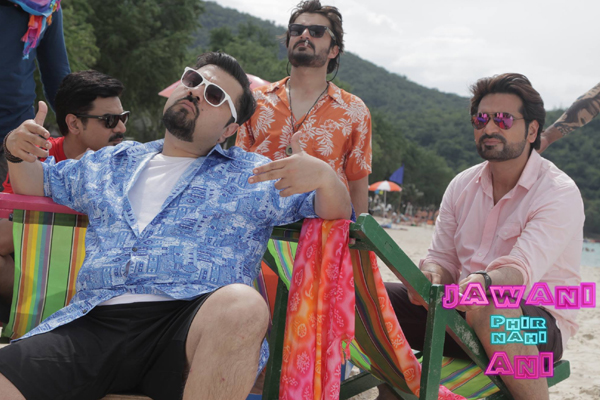 Photo: Jawani Phir Nahi Ani Facebook page[/caption]
...is every Pakistani bachelor’s motto because getting a visa to
Photo: Jawani Phir Nahi Ani Facebook page[/caption]
...is every Pakistani bachelor’s motto because getting a visa to  Photo: Photo: Jawani Phir Nahi Ani Facebook page[/caption]
JPNA’s male characters are appealingly recognisable – the slick, sweet talker (Humayun Saeed), the slightly overweight class quipster (Ahmed Butt), the self-conscious dork (Vasay Chaudry), and the perennially skirt-chasing Don Juan (
Photo: Photo: Jawani Phir Nahi Ani Facebook page[/caption]
JPNA’s male characters are appealingly recognisable – the slick, sweet talker (Humayun Saeed), the slightly overweight class quipster (Ahmed Butt), the self-conscious dork (Vasay Chaudry), and the perennially skirt-chasing Don Juan ( Photo: Screenshot[/caption]
Despite the film’s grossly frequent misogynistic overtures (please refer to all scenes from Thailand and the final courtroom scene), the female characters still manage to take charge of JPNA and steal the spotlight.
The heady combination of a hormonally charged up, very pregnant (both in reel and real life), gun-toting Pakhtun wife (
Photo: Screenshot[/caption]
Despite the film’s grossly frequent misogynistic overtures (please refer to all scenes from Thailand and the final courtroom scene), the female characters still manage to take charge of JPNA and steal the spotlight.
The heady combination of a hormonally charged up, very pregnant (both in reel and real life), gun-toting Pakhtun wife ( Photo: Jawani Phir Nahi Ani Facebook page[/caption]
Everything is a product in JPNA, so much so that even the cast has trouble separating out what they think is marketable to the Pakistani masses from what they actually want.
Does Hamza Ali Abbasi really want to wear that much Levis? There is such a thing as too much crucifixes, plaid and denim on a grown man.
And does Sohai Ali really want to openly reveal her beauty as a result of skin bleaching
Photo: Jawani Phir Nahi Ani Facebook page[/caption]
Everything is a product in JPNA, so much so that even the cast has trouble separating out what they think is marketable to the Pakistani masses from what they actually want.
Does Hamza Ali Abbasi really want to wear that much Levis? There is such a thing as too much crucifixes, plaid and denim on a grown man.
And does Sohai Ali really want to openly reveal her beauty as a result of skin bleaching  Photo: Jawani Phir Nahi Ani Facebook page[/caption]
JPNA made me laugh till my kidney hurt. But that doesn’t change the fact that that the film is essentially a three hour Humayun Saeed self-congratulatory fantasy. For the sake of Allah, please tell me why the man insists on dressing like a dulha (groom) with Shahrukh Khan-esque sultry gazes and highlighted hair rivalling on-screen love interest Mehwish Hayat’s hair?
With maybe 30 minutes of a plot that has been unbearably diluted to a feature length film – albeit with a great cast and attractive celebrity cameos (ahem, hey, Fahad Mustafa!) – my fellow moviegoers and I gasped in mild horror and looked at our watches when the intermission sign flashed on the screen because, no lie, at hour one I was satisfied and ready to go home.
6. In Lollywood, past is the past
[caption id="" align="alignnone" width="600"]
Photo: Jawani Phir Nahi Ani Facebook page[/caption]
JPNA made me laugh till my kidney hurt. But that doesn’t change the fact that that the film is essentially a three hour Humayun Saeed self-congratulatory fantasy. For the sake of Allah, please tell me why the man insists on dressing like a dulha (groom) with Shahrukh Khan-esque sultry gazes and highlighted hair rivalling on-screen love interest Mehwish Hayat’s hair?
With maybe 30 minutes of a plot that has been unbearably diluted to a feature length film – albeit with a great cast and attractive celebrity cameos (ahem, hey, Fahad Mustafa!) – my fellow moviegoers and I gasped in mild horror and looked at our watches when the intermission sign flashed on the screen because, no lie, at hour one I was satisfied and ready to go home.
6. In Lollywood, past is the past
[caption id="" align="alignnone" width="600"] Photo: Jawani Phir Nahi Ani Facebook page[/caption]
JPNA is Lollywood’s conciliatory move telling you the past is prologue.
The soundtrack hits the spot by sneakily following the current Bolly inspired formula for acoustic success; Yo Yo Honey Singh wali beat, scantily clad women, film’s leading men mock rapping in a dark room with sunglasses on for non-visual reasons, and approximately thirty random shout outs to five different alcohol brands.
Bacardi may or may not have been a film sponsor.
Either way, the soundtrack fills the bill and this author guarantees that Fair and Lovely and Nach Ke Dekha will be playing in all shaadi (wedding) halls this winter.
[embed width=“620”]http://www.dailymotion.com/video/x378enp[/embed]
The wedding sets and choreography rival a
Photo: Jawani Phir Nahi Ani Facebook page[/caption]
JPNA is Lollywood’s conciliatory move telling you the past is prologue.
The soundtrack hits the spot by sneakily following the current Bolly inspired formula for acoustic success; Yo Yo Honey Singh wali beat, scantily clad women, film’s leading men mock rapping in a dark room with sunglasses on for non-visual reasons, and approximately thirty random shout outs to five different alcohol brands.
Bacardi may or may not have been a film sponsor.
Either way, the soundtrack fills the bill and this author guarantees that Fair and Lovely and Nach Ke Dekha will be playing in all shaadi (wedding) halls this winter.
[embed width=“620”]http://www.dailymotion.com/video/x378enp[/embed]
The wedding sets and choreography rival a 
 Photo: Facebook- Ho Mann Jahaan Official[/caption]
https://www.youtube.com/watch?v=WOCO6FrxD4M
2. You might belong to the lower strata of society, and may also carry your humble foundations on your arm; but that won't stop you from looking dapper at will. Also, you can deliberately pronounce monotonous as mo-no-tone-ous to convince us of your lack of privileges, but owing to your showy friends and high-profile (and
Photo: Facebook- Ho Mann Jahaan Official[/caption]
https://www.youtube.com/watch?v=WOCO6FrxD4M
2. You might belong to the lower strata of society, and may also carry your humble foundations on your arm; but that won't stop you from looking dapper at will. Also, you can deliberately pronounce monotonous as mo-no-tone-ous to convince us of your lack of privileges, but owing to your showy friends and high-profile (and 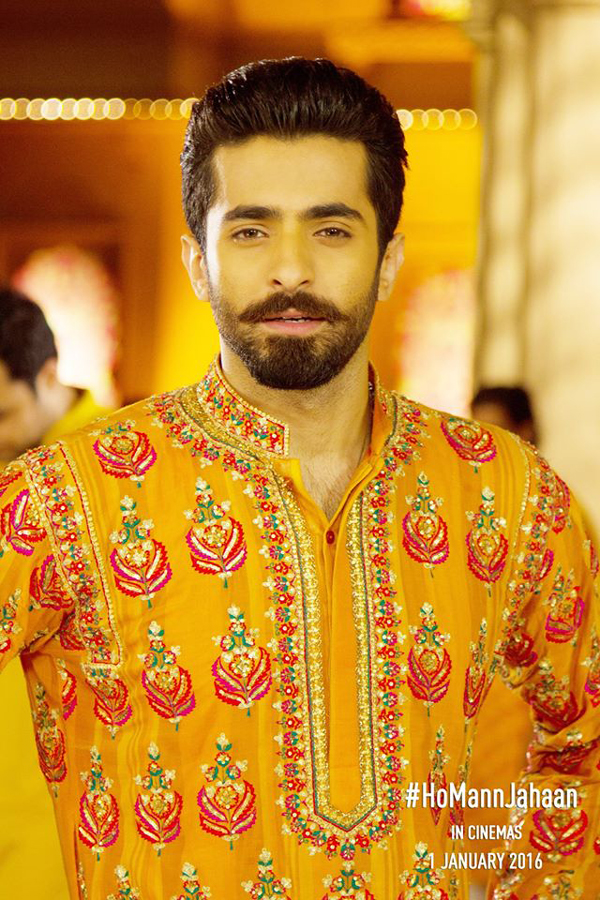 Photo: Facebook- Ho Mann Jahaan Official[/caption]
[caption id="" align="alignnone" width="600"]
Photo: Facebook- Ho Mann Jahaan Official[/caption]
[caption id="" align="alignnone" width="600"]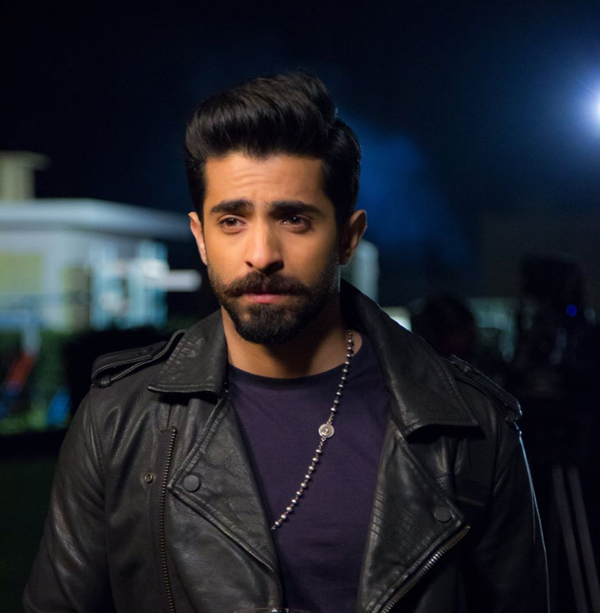 Photo: Facebook- Ho Mann Jahaan Official[/caption]
3. Your life might be a complete mess, replete with all the tragedies that would give “
Photo: Facebook- Ho Mann Jahaan Official[/caption]
3. Your life might be a complete mess, replete with all the tragedies that would give “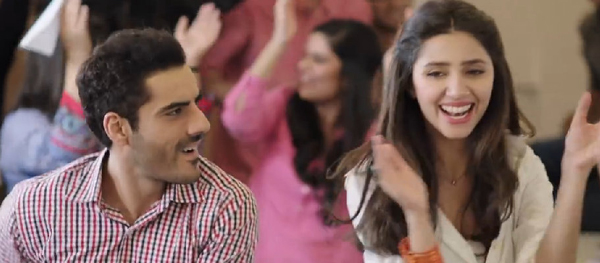 Screenshot[/caption]
[caption id="" align="alignnone" width="600"]
Screenshot[/caption]
[caption id="" align="alignnone" width="600"]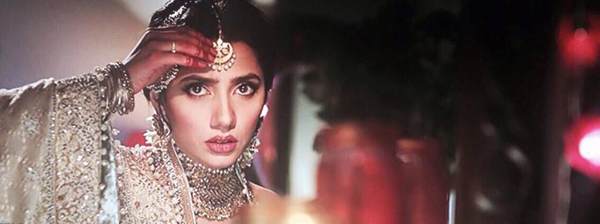 Photo: Facebook- Ho Mann Jahaan Official[/caption]
4. Speaking of which, it has been sadly revealed that there’s only so much you can digest (and appreciate) in the name of
Photo: Facebook- Ho Mann Jahaan Official[/caption]
4. Speaking of which, it has been sadly revealed that there’s only so much you can digest (and appreciate) in the name of  5. Cameos might have registered themselves as the ‘in’ thing, but they are sure to be met with indifference (or worse, yawns) if they do little to compliment the story-line. Who would've thought that the sight of heart-throbs like
5. Cameos might have registered themselves as the ‘in’ thing, but they are sure to be met with indifference (or worse, yawns) if they do little to compliment the story-line. Who would've thought that the sight of heart-throbs like  - Parents will always understand you at the end of the day, and vice versa. In this Pakistani version of “
- Parents will always understand you at the end of the day, and vice versa. In this Pakistani version of “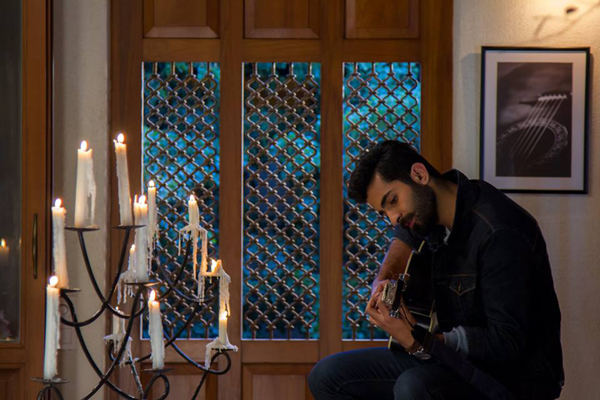 Photo: Facebook- Ho Mann Jahaan Official[/caption]
6. If you’re single and a bit too eager to mingle, friends’ mehndis are where you should be heading. You can always count on finding a hot, compatible, eligible match for you. (Hint: they will approach you with all the Bollywood clichés - your table is empty and they’ll ask if they can take a seat; followed by the usual - ‘I don't really know many people here!’). To which you’re like, “Hell, baby. Now you know me well-enough. For life, that is!”
[caption id="" align="alignnone" width="600"]
Photo: Facebook- Ho Mann Jahaan Official[/caption]
6. If you’re single and a bit too eager to mingle, friends’ mehndis are where you should be heading. You can always count on finding a hot, compatible, eligible match for you. (Hint: they will approach you with all the Bollywood clichés - your table is empty and they’ll ask if they can take a seat; followed by the usual - ‘I don't really know many people here!’). To which you’re like, “Hell, baby. Now you know me well-enough. For life, that is!”
[caption id="" align="alignnone" width="600"]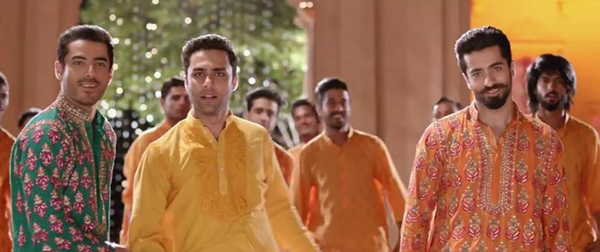 Photo: Facebook- Ho Mann Jahaan Official[/caption]
[caption id="" align="alignnone" width="600"]
Photo: Facebook- Ho Mann Jahaan Official[/caption]
[caption id="" align="alignnone" width="600"] Photo: Facebook- Ho Mann Jahaan Official[/caption]
[caption id="" align="alignnone" width="600"]
Photo: Facebook- Ho Mann Jahaan Official[/caption]
[caption id="" align="alignnone" width="600"]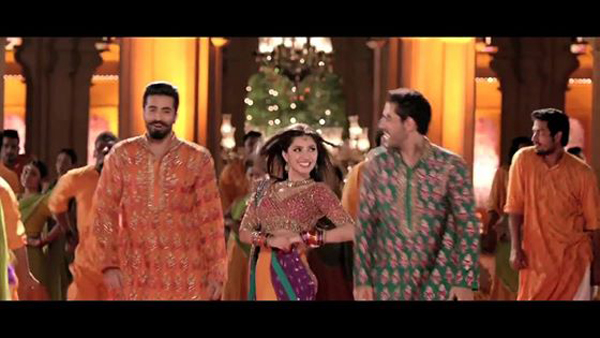 Photo: Facebook- Ho Mann Jahaan Official[/caption]
7. Your dad might be a border-line fanatic, but he’ll just accept you if you're strong-headed enough. And he won’t go berserk after barring you from stopping music and then seeing you on national television out of the blue. You just have to present him, very sweetly, an invitation to your wedding (about which, again, he has no idea), and he will be there to bless you in all his might. Well the film has already been playing for a bit too long, so we’re too tired to question the sanity of this!
[caption id="" align="alignnone" width="600"]
Photo: Facebook- Ho Mann Jahaan Official[/caption]
7. Your dad might be a border-line fanatic, but he’ll just accept you if you're strong-headed enough. And he won’t go berserk after barring you from stopping music and then seeing you on national television out of the blue. You just have to present him, very sweetly, an invitation to your wedding (about which, again, he has no idea), and he will be there to bless you in all his might. Well the film has already been playing for a bit too long, so we’re too tired to question the sanity of this!
[caption id="" align="alignnone" width="600"]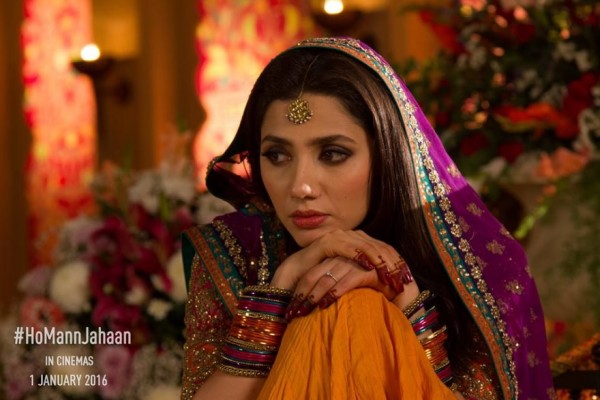 Photo: Facebook- Ho Mann Jahaan Official[/caption]
8. When they say a film is made on the editing table, they aren’t kidding. A film can always (and I repeat, always) use some sleek editing. And then some more of it. If you’re bent upon dwelling on all the unnecessary bits, go for a
Photo: Facebook- Ho Mann Jahaan Official[/caption]
8. When they say a film is made on the editing table, they aren’t kidding. A film can always (and I repeat, always) use some sleek editing. And then some more of it. If you’re bent upon dwelling on all the unnecessary bits, go for a 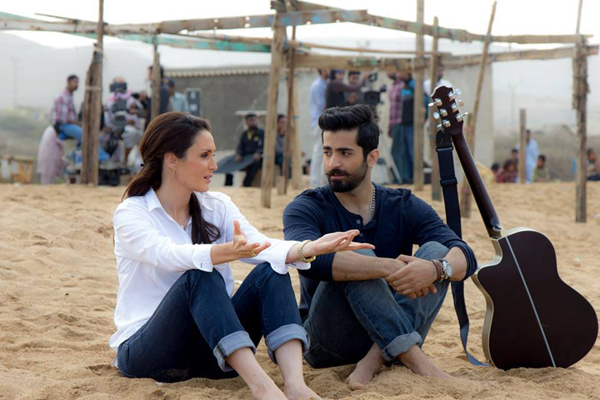 Photo: Facebook- Ho Mann Jahaan Official[/caption]
[caption id="" align="alignnone" width="600"]
Photo: Facebook- Ho Mann Jahaan Official[/caption]
[caption id="" align="alignnone" width="600"] Photo: Facebook- Ho Mann Jahaan Official[/caption]
10.
Photo: Facebook- Ho Mann Jahaan Official[/caption]
10. 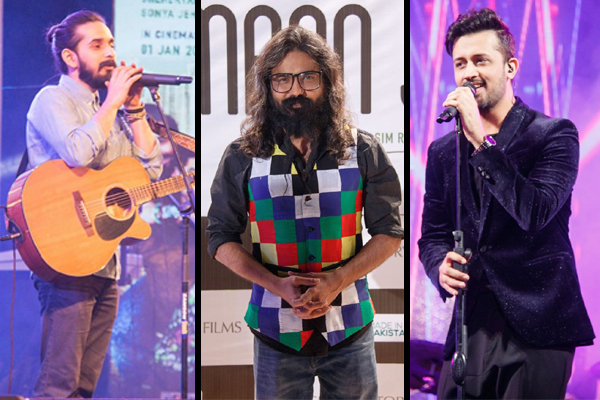 11. Everyone is selfish. Everyone uses you for their own good, eventually (especially the men). But stay tuned: Everyone also learns a lesson somehow and then competes with Mother Teresa in selflessness. Okay, that’s a bit of an exaggeration there - but given the promising trailers and mammoth-like publicity, so is this film.
[embed width-"620" height="348"]https://vimeo.com/142850097[/embed]
[poll id="399"]
11. Everyone is selfish. Everyone uses you for their own good, eventually (especially the men). But stay tuned: Everyone also learns a lesson somehow and then competes with Mother Teresa in selflessness. Okay, that’s a bit of an exaggeration there - but given the promising trailers and mammoth-like publicity, so is this film.
[embed width-"620" height="348"]https://vimeo.com/142850097[/embed]
[poll id="399"]
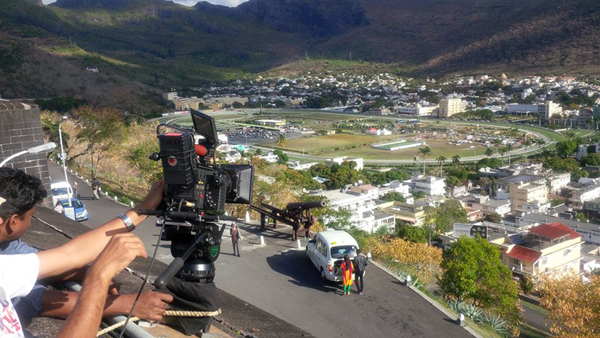 Photo: Bachaana - Official Facebook[/caption]
[caption id="" align="alignnone" width="600"]
Photo: Bachaana - Official Facebook[/caption]
[caption id="" align="alignnone" width="600"]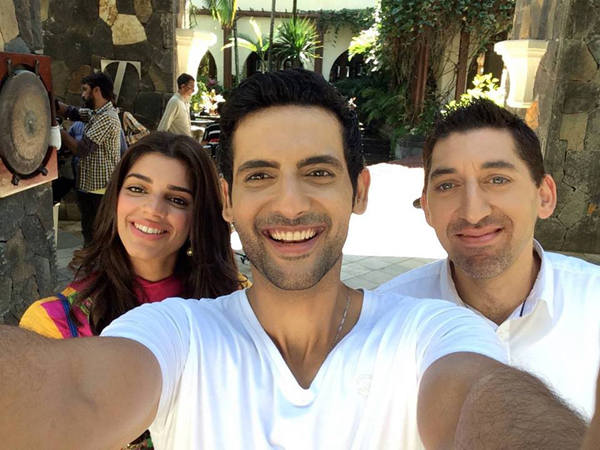 Sanam Saeed, Mohib Mirza and Adeel Hashmi.
Sanam Saeed, Mohib Mirza and Adeel Hashmi. Sanam Saeed and Mohib Mirza.
Sanam Saeed and Mohib Mirza.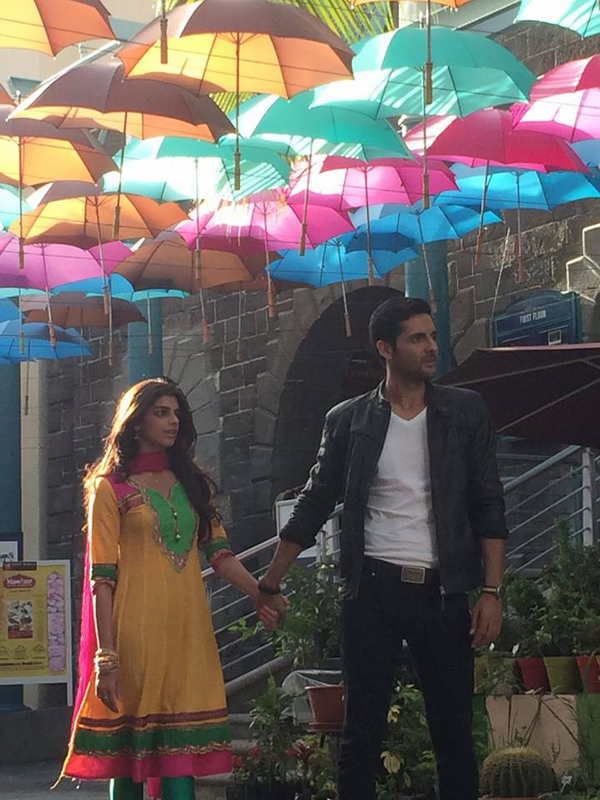 Sanam Saeed and Mohib Mirza.
Sanam Saeed and Mohib Mirza.
 Sanam Saeed
Sanam Saeed Alyy Khan.
Alyy Khan. Photo: Facebook[/caption]
The cinematography depicted has a hypnotic effect on the audience – like in one of the scenes, as the moon appears so the fog lifts.
The protagonists: Fahad and Iman Ali, fully take on the respective roles given to them of Jamal and Mehtab Begum. So absorbed were they in their acting that one could not believe that it was actually role playing.
[caption id="" align="alignnone" width="600"]
Photo: Facebook[/caption]
The cinematography depicted has a hypnotic effect on the audience – like in one of the scenes, as the moon appears so the fog lifts.
The protagonists: Fahad and Iman Ali, fully take on the respective roles given to them of Jamal and Mehtab Begum. So absorbed were they in their acting that one could not believe that it was actually role playing.
[caption id="" align="alignnone" width="600"] Iman Ali.
Iman Ali. Fahad Mustafa.
Fahad Mustafa. Fahad Mustafa.
Fahad Mustafa. Fahad Mustafa.
Fahad Mustafa. Manzar Sehbai
Manzar Sehbai Iman Ali.
Iman Ali. Iman Ali.
Iman Ali. Alyy Khan.
Alyy Khan. Iman Ali.
Iman Ali. Iman Ali and Fahad Mustafa.
Iman Ali and Fahad Mustafa. Fahad Mustafa and Iman Ali.
Fahad Mustafa and Iman Ali.
 Photo: Screenshot[/caption]
This made me wonder whether it is the film industry that needs a fresh and novel concept of thinking and originality or do we, the viewers, need all this more desperately?
Is it because anything other than an item song or male humour is just not worth our time and attention? Is it because our Urdu language skills are becoming more and more pathetic with every passing day and not much is happening to revive the role of Urdu literature in our country? Our colonised mind-set probably continues to stop us from doing that.
The larger question that remains to be unanswered is; is anything that is difficult for us to understand, that requires us to learn, think and read more, and challenges us, not worth our time?
[poll id="546"]
Photo: Screenshot[/caption]
This made me wonder whether it is the film industry that needs a fresh and novel concept of thinking and originality or do we, the viewers, need all this more desperately?
Is it because anything other than an item song or male humour is just not worth our time and attention? Is it because our Urdu language skills are becoming more and more pathetic with every passing day and not much is happening to revive the role of Urdu literature in our country? Our colonised mind-set probably continues to stop us from doing that.
The larger question that remains to be unanswered is; is anything that is difficult for us to understand, that requires us to learn, think and read more, and challenges us, not worth our time?
[poll id="546"]
 Photo: Facebook[/caption]
The movie starts with the main characters, Ayaan (
Photo: Facebook[/caption]
The movie starts with the main characters, Ayaan ( Photo: Screenshot[/caption]
Ayaan and Saadia are the directors of the project; Alia and Raheel play their roles in scene one. A dog-tired comedy but reasonable wit also weaves its way through the ‘very horror’ (pun intended) film as Alia is asked,
Photo: Screenshot[/caption]
Ayaan and Saadia are the directors of the project; Alia and Raheel play their roles in scene one. A dog-tired comedy but reasonable wit also weaves its way through the ‘very horror’ (pun intended) film as Alia is asked,
 Photo: Screenshot[/caption]
As the movie progresses, the plot solidifies as well. The suspense kicks in when Ayaan, the ‘director’, refuses to believe that there is a sinister
Photo: Screenshot[/caption]
As the movie progresses, the plot solidifies as well. The suspense kicks in when Ayaan, the ‘director’, refuses to believe that there is a sinister  Photo: Facebook[/caption]
Ayaan is a violent bully and usually the first one to point fingers and label people as cowards. Despite being passionate about his so-called ‘dream’ project, he backs out. This is where the title of the movie Aksbandh or ‘inner reflection’ is realised.
But I’ll leave the details for the viewers to find out.
[caption id="" align="alignnone" width="600"]
Photo: Facebook[/caption]
Ayaan is a violent bully and usually the first one to point fingers and label people as cowards. Despite being passionate about his so-called ‘dream’ project, he backs out. This is where the title of the movie Aksbandh or ‘inner reflection’ is realised.
But I’ll leave the details for the viewers to find out.
[caption id="" align="alignnone" width="600"] Photo: Facebook[/caption]
The prowess of the director and producer of the film lies in their knack of enhancing the cinematic experience; producing a horror movie whilst retaining the element of believability is a truly commendable skill. The difference between filmic reality and role-play is depicted with a clarity that is remarkable.
The film concludes with the director's script becoming a reality – submerging fiction with reel-reality, leaving the audience overwhelmed. The film did not emit the kind of response that was expected from the audience.
Despite all efforts put into it, the movie was
Photo: Facebook[/caption]
The prowess of the director and producer of the film lies in their knack of enhancing the cinematic experience; producing a horror movie whilst retaining the element of believability is a truly commendable skill. The difference between filmic reality and role-play is depicted with a clarity that is remarkable.
The film concludes with the director's script becoming a reality – submerging fiction with reel-reality, leaving the audience overwhelmed. The film did not emit the kind of response that was expected from the audience.
Despite all efforts put into it, the movie was 
 Photo: Screenshot[/caption]
At the Hotal, Kashika starts seeing disturbing visions of her unborn sister and soon the reality begins unfolding before her eyes. She starts to put the pieces of the terrifying puzzle together. With the help of her ghost sister, Kashika eventually dodges the infamous doctor.
[caption id="" align="alignnone" width="600"]
Photo: Screenshot[/caption]
At the Hotal, Kashika starts seeing disturbing visions of her unborn sister and soon the reality begins unfolding before her eyes. She starts to put the pieces of the terrifying puzzle together. With the help of her ghost sister, Kashika eventually dodges the infamous doctor.
[caption id="" align="alignnone" width="600"]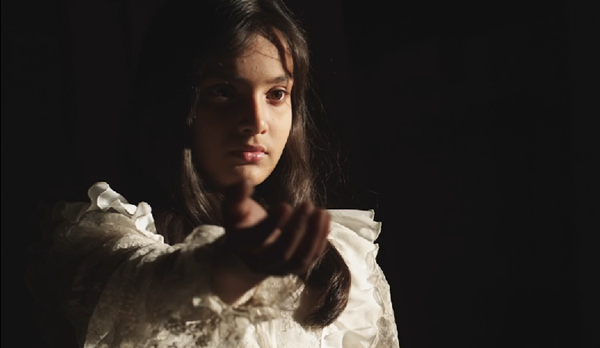 Photo: Screenshot[/caption]
The rest of the plot revolves around a CBI inspector and a vengeful woman looking for her twin sister’s assassin. To bolster the shaky and confusing storyline, the characters of a tight-lipped administrator, a cook, a gardener, a mysterious Poornima (girl born on a full moon day) and a talkative taxi driver were included to create a more convoluted and baffling crime thriller.
[caption id="" align="alignnone" width="600"]
Photo: Screenshot[/caption]
The rest of the plot revolves around a CBI inspector and a vengeful woman looking for her twin sister’s assassin. To bolster the shaky and confusing storyline, the characters of a tight-lipped administrator, a cook, a gardener, a mysterious Poornima (girl born on a full moon day) and a talkative taxi driver were included to create a more convoluted and baffling crime thriller.
[caption id="" align="alignnone" width="600"]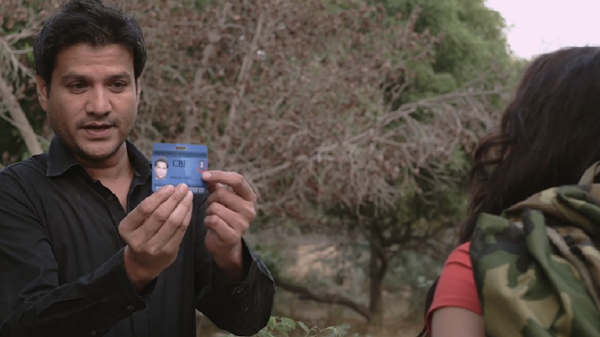 Photo: Screenshot[/caption]
To be honest, Khan’s independent movie cannot be categorised as a typical Pakistani film, except for the fact that it showcases Lollywood star Meera and other Pakistani artists. The film exhibits a very Bollywoodish aura starting from characterisations, to costumes and locations. Even the prime language of the script is Hindi. Despite various similarities, Pakistani moviegoers may not be able relate to these things.
[caption id="" align="alignnone" width="600"]
Photo: Screenshot[/caption]
To be honest, Khan’s independent movie cannot be categorised as a typical Pakistani film, except for the fact that it showcases Lollywood star Meera and other Pakistani artists. The film exhibits a very Bollywoodish aura starting from characterisations, to costumes and locations. Even the prime language of the script is Hindi. Despite various similarities, Pakistani moviegoers may not be able relate to these things.
[caption id="" align="alignnone" width="600"]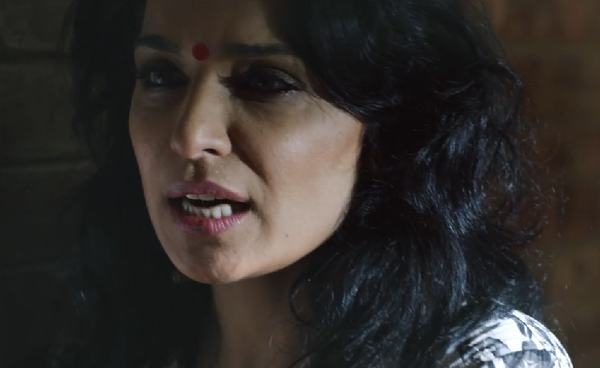 Photo: Screenshot[/caption]
Credit where credit is due, Khan should be appreciated for selecting a bold issue such as female foeticide; the hideous practice of
Photo: Screenshot[/caption]
Credit where credit is due, Khan should be appreciated for selecting a bold issue such as female foeticide; the hideous practice of 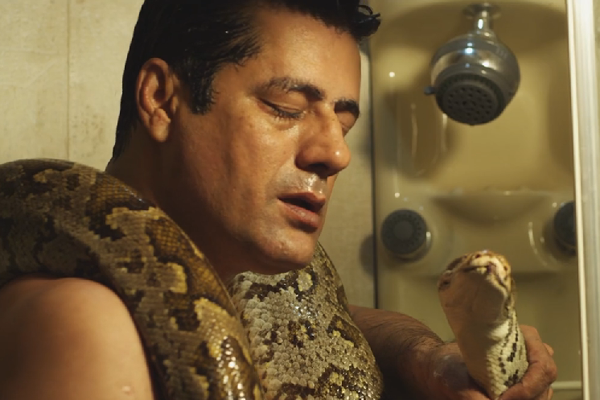 Photo: Screenshot[/caption]
Khan’s screenplay tried to touch upon the socio-legal complexities of this abhorrent custom. However, the loose grip on the plot, low production value, irrelevant songs, ostentatious dances, and countless lapses in logic and reason turned Hotal into an intolerable piece of hogwash. The plot turns whacky midway and characters seem to mindlessly jump into scenes out of nowhere.
[caption id="" align="alignnone" width="600"]
Photo: Screenshot[/caption]
Khan’s screenplay tried to touch upon the socio-legal complexities of this abhorrent custom. However, the loose grip on the plot, low production value, irrelevant songs, ostentatious dances, and countless lapses in logic and reason turned Hotal into an intolerable piece of hogwash. The plot turns whacky midway and characters seem to mindlessly jump into scenes out of nowhere.
[caption id="" align="alignnone" width="600"] Photo: Screenshot[/caption]
Instead of carefully considering the set design, cinematography, costumes, lighting and background music, all the attention has been wasted on irrelevant item numbers such as Lakshmi and Mombatti. Similarly, the Hindi diction of all actors failed to impress audiences. I fail to understand the director’s logic behind this.
https://www.youtube.com/watch?v=ScLQnRJTyas
Although, Meera won the Best Actress award for her character of Kashika at the Delhi International Film Festival 2014, there is nothing praiseworthy about her performance. She has delivered the same performances in the past as well; Billi (2000), Khilona (1996), Khoye Ho Tum Kahan (2001). Hotal is definitely not a feather in her cap.
All in all, Hotal is a freaky product, not a spine-chilling psycho-thriller.
[poll id="570"]
Photo: Screenshot[/caption]
Instead of carefully considering the set design, cinematography, costumes, lighting and background music, all the attention has been wasted on irrelevant item numbers such as Lakshmi and Mombatti. Similarly, the Hindi diction of all actors failed to impress audiences. I fail to understand the director’s logic behind this.
https://www.youtube.com/watch?v=ScLQnRJTyas
Although, Meera won the Best Actress award for her character of Kashika at the Delhi International Film Festival 2014, there is nothing praiseworthy about her performance. She has delivered the same performances in the past as well; Billi (2000), Khilona (1996), Khoye Ho Tum Kahan (2001). Hotal is definitely not a feather in her cap.
All in all, Hotal is a freaky product, not a spine-chilling psycho-thriller.
[poll id="570"]
 Jamal Shah
Jamal Shah Photo: Screenshot[/caption]
[caption id="" align="alignnone" width="600"]
Photo: Screenshot[/caption]
[caption id="" align="alignnone" width="600"] Abdul Raheem
Abdul Raheem Ayub Khoso as Ameer Qudrat-Ullah
Ayub Khoso as Ameer Qudrat-Ullah Ayub Khoso and Zubair Achakzai
Ayub Khoso and Zubair Achakzai Iram Rehman, Shehar Bano and Emel Karakose
Iram Rehman, Shehar Bano and Emel Karakose Photo: Facebook[/caption]
Photo: Facebook[/caption]
 Shamyl Khan and Maira Khan
Shamyl Khan and Maira Khan Firdaus Jamal
Firdaus Jamal Jamal Shah and Emel Karakose
Jamal Shah and Emel Karakose Asif Shah
Asif Shah


 Photo: Farah Fashion[/caption]
The movie starts off with Esha (Ushna Shah), who is head over heels in love with Ramis (Omar Shahzad), hoping that one day he will propose to her. Esha’s friends Sherry (Mohsin Abbas) and Danish (Ahmed Rehman) inform Ramis regarding her feelings towards him, resulting in him asking for her hand in marriage.
But fate takes its toll when Esha’s father, Rana (Salman Shahid) announces that his daughter has already been betrothed to his friend’s only son, Nael (Mohib Mirza). From there on, things take a complete turn and that’s what
Photo: Farah Fashion[/caption]
The movie starts off with Esha (Ushna Shah), who is head over heels in love with Ramis (Omar Shahzad), hoping that one day he will propose to her. Esha’s friends Sherry (Mohsin Abbas) and Danish (Ahmed Rehman) inform Ramis regarding her feelings towards him, resulting in him asking for her hand in marriage.
But fate takes its toll when Esha’s father, Rana (Salman Shahid) announces that his daughter has already been betrothed to his friend’s only son, Nael (Mohib Mirza). From there on, things take a complete turn and that’s what  Photo: Farah Fashion[/caption]
The direction of Teri Meri Love Story is amongst the worst that Pakistani cinema has witnessed in the last couple of years. The blurry images and attempts to try and fit everything in a single frame made the movie into a visual torture. There were jerks in the camera movement during fight scenes; making the scenes come across as amateur attempts at movie-making.
Performance wise, nobody stood out. Only Mohib looked a bit convincing, but he still needs to stop play-acting and be a bit more natural. After
Photo: Farah Fashion[/caption]
The direction of Teri Meri Love Story is amongst the worst that Pakistani cinema has witnessed in the last couple of years. The blurry images and attempts to try and fit everything in a single frame made the movie into a visual torture. There were jerks in the camera movement during fight scenes; making the scenes come across as amateur attempts at movie-making.
Performance wise, nobody stood out. Only Mohib looked a bit convincing, but he still needs to stop play-acting and be a bit more natural. After  Photo: Farah Fashion[/caption]
Ushna Shah fails at looking the part, as well as playing it. Mohsin Abbas should not have opted for such a role, especially after being one of the highlights in
Photo: Farah Fashion[/caption]
Ushna Shah fails at looking the part, as well as playing it. Mohsin Abbas should not have opted for such a role, especially after being one of the highlights in 
 Hamza Bangash
Hamza Bangash
 Armeena Rana Khan
Armeena Rana Khan Bilal Ashraf, Armeena Rana Khan and Ali Rehman Khan
Bilal Ashraf, Armeena Rana Khan and Ali Rehman Khan Bilal Ashraf and Armeena Rana Khan
Bilal Ashraf and Armeena Rana Khan Bilal Ashraf, Armeena Rana Khan and Ali Rehman Khan
Bilal Ashraf, Armeena Rana Khan and Ali Rehman Khan
 Pakistani woman fighter pilot, Marium Mukhtar
Pakistani woman fighter pilot, Marium Mukhtar Photo: Facebook[/caption]
During the 120-minute telefilm, we see Marium transcend from a cadet to a PAF fighter pilot. We see her struggle and overcome the harshest of circumstances, deprived of all the blessings we so casually take for granted.
[caption id="" align="alignnone" width="600"]
Photo: Facebook[/caption]
During the 120-minute telefilm, we see Marium transcend from a cadet to a PAF fighter pilot. We see her struggle and overcome the harshest of circumstances, deprived of all the blessings we so casually take for granted.
[caption id="" align="alignnone" width="600"] Sanam Baloch
Sanam Baloch Sanam Baloch
Sanam Baloch Photo: Facebook[/caption]
The star of the telefilm,
Photo: Facebook[/caption]
The star of the telefilm,  Sanam Baloch
Sanam Baloch Sanam Baloch
Sanam Baloch Sanam Baloch
Sanam Baloch Photo: Facebook[/caption]
Photo: Facebook[/caption]


